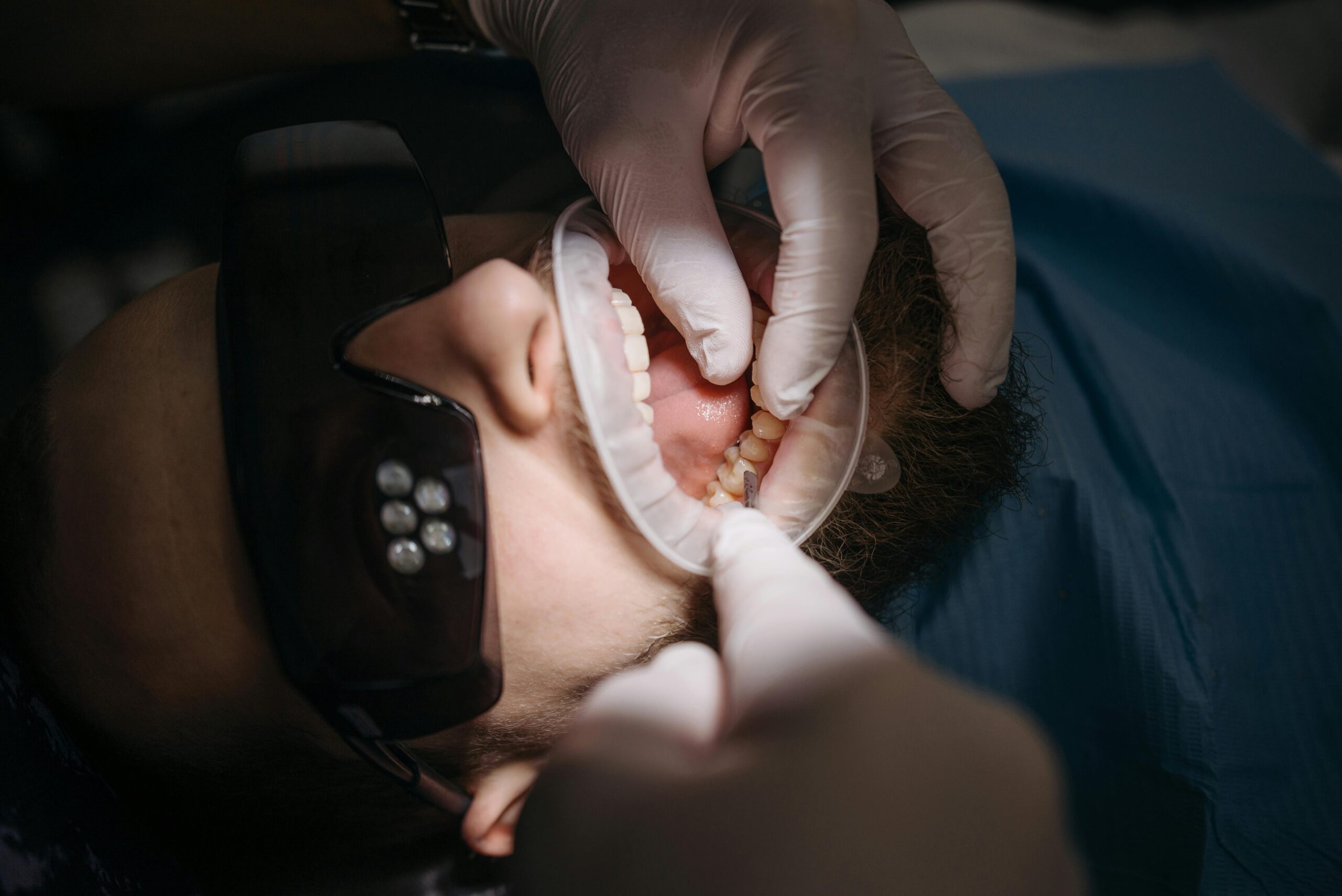Understanding Veneers Cost Factors
Veneers cost varies from person to person because each smile and treatment plan is different. The material you choose, how many teeth are treated, and whether any preparatory care is needed all influence the final fee. During a consultation, we review goals, examine your bite and enamel, and outline options like our porcelain veneers treatment to give a clear, personalized estimate.
Common elements that can affect the cost of veneers include:
- Material type: porcelain is lab-crafted; composite is placed chairside.
- Number of veneers: treating more teeth increases planning and lab or chair time.
- Smile design complexity: closing gaps, adjusting alignment, or changing shape/shade adds steps.
- Tooth preparation needs: minimal-prep vs. conventional prep affects appointments and materials.
- Additional care: cleaning, whitening, or gum treatment may be recommended before veneers.
- Laboratory and technology: digital scanning, custom shading, and premium ceramics can influence fees.
The cost of veneers also reflects the clinician’s time for diagnostics, mock-ups, temporaries, and precise bonding. Porcelain veneer cost and composite veneer cost differ because fabrication and polishing workflows are not the same. If you have a small chip or single spot to fix, conservative dental bonding may be a budget-friendlier alternative; we can compare benefits and limitations chairside. Insurance seldom covers purely cosmetic care, but it may contribute to medically necessary treatments that support veneer success.
To keep your investment predictable, we discuss options, sequence treatment to match your goals, and explain maintenance so you know what to expect long term. If you would like to stop by or plan a visit, check our current hours before you come. We’re here to help you choose a plan that fits your timeline and smile.
Average Cost of Veneers Explained
There is no single “average” because veneer fees are tailored to your mouth and goals. Veneers cost is usually calculated per tooth, and the final number depends on material, how many teeth are treated, and the steps needed to design and place them. Location, lab work, and the complexity of your smile makeover also play a role in what you pay.
Material choice influences veneer pricing. Porcelain is custom-fabricated outside the mouth, which adds laboratory artistry, shading, and fitting time. Chairside composite is sculpted and polished directly on the tooth, often in one visit, with less lab involvement. Porcelain often offers greater stain resistance and luster over time, while composite can be easier to repair if you chip a corner later. The right option for you depends on appearance goals, wear patterns, and how you plan to maintain your smile.
The number of veneers matters because designing a single front tooth is different from harmonizing eight to ten teeth across a full smile line. Sometimes we can reduce the number needed by aligning teeth first, which may simplify shapes and edges. In select cases, minor Invisalign alignment before veneers can improve symmetry and help your final result look natural with fewer restorations.
Preparatory care can affect timing and fees. Whitening is often recommended before we match veneer shade, so your new ceramics or composites blend with your brighter enamel; if you are considering a shade boost first, explore our in-office teeth whitening options. Other steps—like small fillings, smoothing old bonding, or gentle gum contouring—may be advised to create stable edges and healthy tissue around your veneers.
Longevity and maintenance also factor into overall value. Many patients protect their veneers with a custom night guard, plan routine cleanings, and avoid using front teeth to open packages. If a veneer chips years later, repair or replacement is usually limited to that tooth. Dental insurance rarely covers purely cosmetic veneers, though it may assist with medically necessary parts of care. If helpful, ask us about flexible payment options and veneers financing to pace your treatment in a way that fits your budget and timeline.
Porcelain Veneer Cost Breakdown
A porcelain veneer fee is built from several steps: evaluation and planning, records and mock-ups, tooth preparation with temporaries, the laboratory fabrication, and the final bonding visit. The number of teeth, complexity of changes, and any supportive care adjust the total. Here is how those pieces typically come together so you can see what you are paying for.
Diagnosis and smile design come first. This includes a comprehensive exam, photos, and digital scans or impressions to study your bite and enamel. Many cases benefit from a wax-up or trial smile to preview shape and length before we commit to ceramics. Careful planning reduces chair time later and helps your veneers look natural and balanced.
Tooth preparation is usually minimal, focused on enamel for strong bonding. After shaping, we take precise impressions or scans, record shade details, and place well-contoured temporaries to protect your teeth and guide gum health. These visits include anesthesia, isolation, and adjustments to keep you comfortable while the lab crafts your final restorations.
The laboratory phase is a major cost component. A dental ceramist custom-builds each veneer, layering porcelain for color, translucency, and fit at the margins. At delivery, we try-in, verify shade in natural light, then etch, silanate, and bond each veneer with adhesive protocols, followed by bite refinement and high-gloss polishing. Many patients also choose a night guard to protect their new edges if they clench or grind.
Supportive or alternative treatments can change the plan and timeline. Whitening, small fillings, or gentle gum contouring may be recommended before veneers so color and edges blend correctly. If a tooth has extensive damage or prior root canal therapy, a full-coverage restoration may be a better long-term choice; in those situations, we may discuss custom crowns and bridges for strength and coverage. When infection or deep decay is present, saving the tooth with root canal treatment may be needed before any cosmetic work. We outline each line item in advance so veneers cost stays clear and predictable for your smile goals.
Composite Veneer Cost Overview
Composite veneers are often a more budget-friendly option because they are sculpted directly on your teeth in the dental chair, with little or no outside lab work. Your final veneers cost depends on how many teeth are treated, the complexity of reshaping and color matching, and whether any preparatory care is needed to support a healthy, long‑lasting result.
What you’re paying for is the time and precision it takes to plan, place, and polish the restorations. That may include a smile evaluation, shade selection, isolation for a dry field, layering the composite for natural translucency, and careful finishing and gloss. Cases that close spaces, adjust edges, or blend multiple shades usually take longer than refining a single small chip, so fees scale with the detail involved. If you want a brighter baseline before matching the new veneers, whitening is often scheduled first so the composite can be blended to your updated shade.
Maintenance influences long‑term value. Composite can pick up surface stains or small wear marks over the years, but it is generally straightforward to repolish or repair without replacing the entire veneer. Many people choose a custom night guard to protect their bite if they clench or grind, and everyone benefits from regular cleanings and gentle home care. Insurance typically does not cover cosmetic veneers, but it may contribute to medically necessary work (like treating decay or gum inflammation) that helps your veneers succeed.
Timing and comfort also play a role. A single composite veneer can often be completed in one visit, while full smile designs may be staged over several appointments to fine‑tune symmetry and shade. If longer sessions make you anxious, ask about our gentle oral sedation options to help you relax while we work. During your consultation, we’ll outline the steps, sequence them around your schedule, and provide a clear, personalized estimate so you understand how each part of your plan contributes to the overall fee.
How Veneer Pricing Varies by Type
Veneer pricing varies by type because the materials and the way they are made are different. Porcelain veneers are crafted in a lab and usually cost more per tooth than composite veneers placed directly in the chair. Minimal‑prep, no‑prep, and partial veneers can also change appointment time and steps, which affects the fee. Your final veneers cost reflects this mix of material, technique, and planning.
Porcelain veneers are indirect restorations. We prepare the tooth surface conservatively, take precise scans or molds, and a ceramist builds each veneer for fit, color, and translucency. This lab artistry, plus try‑in and adhesive bonding steps, adds to chair time and laboratory time. Porcelain often holds its luster and resists stains well, which many people value when comparing long‑term appearance.
Composite veneers are direct restorations. They are sculpted and layered on your tooth in one or more visits, then finely polished. Because there is little or no outside lab work, the fee is tied mostly to clinical time and the complexity of shaping and shade blending. Composite is also easier to spot‑repair later if you chip an edge, which can influence lifetime maintenance planning.
Preparation style changes pricing, too. No‑prep or additive cases may reduce time on the drill and simplify temporaries, while conventional minimal‑prep cases include anesthesia, isolation, and carefully made provisional veneers. Partial veneers (for example, covering only a corner or edge) typically involve less material and time than full‑facial coverage, but they require precise color matching so the margins disappear in your smile.
Case complexity is another driver. Closing spaces, masking deep discoloration, or correcting uneven edges may require extra layers, custom staining, or more teeth to harmonize the smile line. Adjacent care—such as whitening before shade selection, small fillings, or gentle gum contouring—can be added to either porcelain or composite plans to support a natural look.
Finally, protection and follow‑up affect overall value across both types. Night guards for clenching, routine cleanings, and gentle home care help your veneers last. During a consultation, we outline the steps for each option side by side so you can compare how material choice, prep style, and smile goals shape the total fee.
Financing Options for Veneers
You have several ways to make veneers fit your budget. Common choices include in‑office payment plans, third‑party dental financing, and using HSA or FSA funds when eligible. Dental insurance may help with medically necessary steps (such as treating decay or gum issues) but rarely covers purely cosmetic veneers. Cosmetic dentistry offers many pathways, and it can influence what you spend [1].
To keep veneers cost predictable, we map your plan and sequence appointments. Phasing care might mean whitening first, completing a few key veneers now, and finishing others later as your schedule and budget allow. If only a small chip or edge needs attention, conservative bonding can be a shorter, lower‑commitment option we can consider as part of your plan.
Many people use pre‑tax accounts (HSA/FSA) for eligible dental care; check your plan’s rules on cosmetic services, required documentation, and deadlines. Third‑party financing typically offers monthly payments after a simple application; terms vary by lender. We provide clear, itemized estimates and receipts so you can submit claims or paperwork as needed for your plan or financing provider.
Thinking beyond the first visit helps you judge value over time. Veneers are well studied for improving dental esthetics when properly planned and bonded [2]. In some cases, less‑invasive steps—like whitening, minor alignment, or selective bonding—can meet goals or be used first to reduce the scope of ceramic work and overall cost exposure [3]. During your consultation, we review these options side by side so you can choose a payment path and treatment sequence that match your goals and comfort.
What Influences Veneers Price?
Veneers price depends on your goals, the teeth involved, and the steps it takes to design and place them well. Material choice (porcelain or composite), case complexity, and the amount of planning and chair time all contribute to the fee. Because every plan is custom, veneers cost varies from person to person and is finalized after an exam and smile design discussion.
Material and scope are major drivers. Porcelain involves a dental laboratory and multiple visits for custom color layering and fit, while chairside composite is shaped directly in the mouth, often with less lab involvement. The number of teeth matters, too: matching one front tooth is different from coordinating several across a smile line. Heavier changes—such as masking deep discoloration or harmonizing uneven edges—can add steps and time.
Workflow and technology influence time and cost as well. Digital scanning, photography, mock-ups, and custom shading help plan a natural result and reduce remakes. In prosthodontics, studies comparing digital and conventional fabrication show that workflow choices can affect both time efficiency and cost, which is relevant when planning cosmetic ceramics like veneers [4].
Adhesive protocols and material thickness also shape the appointment and technique. For example, ceramic thickness affects how well light cures resin cements beneath, which guides the selection of cements and bonding steps for reliable results; complex cases may require more meticulous procedures and checks [5]. These technical factors don’t just protect longevity; they can influence how long each visit takes.
Adjacent care can change the total, too. Whitening before shade selection, small fillings, or gentle gum contouring may be recommended so color and edges blend smoothly. Protective choices like a custom night guard for clenching add value by helping your new edges last. If you prefer added relaxation, choosing our deep sedation care can lengthen visits and may affect fees. Insurance rarely covers purely cosmetic veneers but may assist with medically necessary treatments that support a healthy foundation for your smile.
Comparing Costs: Porcelain vs Composite
Porcelain veneers usually have a higher upfront fee than composite because they are custom‑made in a dental lab and placed over multiple visits. Composite veneers are sculpted directly on the tooth, so the initial cost is typically lower. The better value for you depends on how many teeth are treated, the changes you want, and how you plan to maintain your smile. In other words, veneers cost isn’t just about day one—it’s also about durability and upkeep over time.
Porcelain involves detailed planning, precise tooth preparation, and laboratory artistry to layer color and translucency. This process adds lab and chair time, which raises the initial fee. Many people choose porcelain for its shine and stain resistance, which can keep the result stable in appearance for years when cared for well. If a porcelain veneer chips significantly, replacement is more likely than a simple patch, so repairs can be a larger event even if they are infrequent.
Composite is placed chairside, often in a single visit, which keeps initial fees lower and timelines shorter. It can be repaired or repolished more easily if you scuff an edge or notice small surface stains later. That convenience is a plus, but composite may need periodic maintenance to keep its gloss, especially if you drink dark beverages or grind your teeth. Good home care and professional cleanings help either material last; many patients also protect their new edges with a custom night guard.
Think about lifetime value as well as the first invoice. If you want a major color change or complex shape corrections across many teeth, porcelain may help maintain a uniform look over time with fewer touch‑ups. If your goals are modest—such as refining a chip, smoothing an edge, or closing a small gap—composite can meet the goal with less upfront cost and easy future tweaks. For teeth with heavy wear, cracks, or large fillings, we may discuss whether a different restoration is more appropriate for strength. During a consultation, we compare options side by side, outline the steps and number of visits, and provide clear, personalized estimates so you can choose the material that best fits your timeline, maintenance preferences, and budget.
Getting the Best Value for Veneers
Best value means the smile you want with care that lasts, not just the lowest fee. A thoughtful plan can reduce the number of teeth treated, limit future touch‑ups, and protect your enamel and gums. We focus on matching material and technique to your goals so your veneers look natural today and continue to perform well over time.
Start with clear goals and a precise roadmap. Previewing shape and length with photos, scans, or a mock‑up helps us choose where veneers truly add benefit and where a small polish or bonding tweak may be enough. Sequencing care can stretch value: whitening before shade selection or minor alignment before veneers may let us treat fewer teeth while achieving a more uniform result.
Preserving healthy enamel is part of value. When appropriate, conservative preparation supports strong bonding and helps your edges age well. Material choice matters, too. Porcelain often offers long‑term color stability and luster; composite can be a practical choice for modest changes and straightforward future repairs. Your daily habits guide the decision—grinding, dark beverages, and bite patterns all influence which option will hold up best for you.
Think about upkeep when comparing veneers cost. Plan for regular cleanings, gentle home care, and a custom night guard if you clench or grind. These small steps help prevent chips and surface wear. If a veneer ever needs attention, we address just that tooth—polishing composite, repairing a small corner, or replacing a single ceramic—so maintenance stays focused and efficient.
Clarity up front also protects your budget. Ask for an itemized treatment sequence, how many visits are expected, and what is included (temporaries, try‑ins, and protective appliances). Staging the plan—handling foundational care first, completing the most visible teeth next, and finishing remaining details later—can align dentistry with your timeline without compromising the final look. With a personalized design, careful technique, and smart maintenance, you can maximize both the beauty and the lifespan of your veneers.
Hidden Fees in Veneer Pricing
Hidden fees are the parts of veneer care that may not show up in a simple per‑tooth quote. A clear, itemized plan should spell out what is included and what could add to the total. When we map your case, we explain these items up front so your veneers cost stays predictable and there are no surprises.
Diagnostics and planning can carry separate charges. These may include a comprehensive exam, radiographs when indicated, detailed photos, digital scans or impressions, and a wax‑up or “trial smile” to preview shape and length. Shade analysis in natural light and custom characterization are sometimes billed as distinct steps, especially in complex color cases. If multiple try‑ins or remakes are needed beyond the planned scope, some labs charge extra; knowing the remake policy helps you anticipate this.
Provisional (temporary) veneers are part of most porcelain cases and can have replacement or repair fees if they break or need extended wear. Rush laboratory service or expedited shipping can add cost when a tight timeline is requested. Extra adjustment visits after delivery—beyond routine follow‑ups—may be billed if significant refinements are required to the bite or edges.
Foundational care is another area where totals can change. Professional cleaning before shade selection, small fillings, smoothing old bonding, or treating gum inflammation helps veneers fit and look natural. In some smiles, gentle gum contouring or crown lengthening is advised to balance tooth proportions; those procedures are separate from veneer placement. If alignment is needed to reduce how many teeth require coverage, short‑term orthodontic steps may be planned before veneers and billed on their own.
Comfort and protection can influence the final number. Sedation options, when chosen, are typically separate line items. Many patients invest in a custom night guard to protect new edges from clenching or grinding; this appliance is not usually bundled with cosmetic care. Maintenance over time—such as repolishing composite, repairing a small chip, or replacing a single veneer years later—is billed per visit and per tooth as needed.
To avoid hidden fees, ask for a written sequence that lists what is included (records, mock‑ups, temporaries, try‑in, bonding) and what is not (pre‑treatment dentistry, gum procedures, rush lab, sedation, night guard). Clear expectations help you compare plans fairly and choose the option that fits your goals and timeline.
Frequently Asked Questions
Here are quick answers to common questions people have about How Much Do Veneers Cost? in Glendale, AZ.
- What affects the cost of veneers the most?The cost of veneers is influenced by several factors including the material chosen (porcelain or composite), the complexity of the smile design, and the number of teeth being treated. Additionally, the need for preparatory procedures like cleaning, whitening, or minor orthodontic work can add to the overall fee. Each person’s treatment plan is unique, so discussing your specific goals and needs during a consultation is the best way to understand the potential cost.
- How do porcelain veneers compare to composite in terms of cost?Porcelain veneers generally cost more than composite veneers because they require custom fabrication in a dental lab and multiple visits. In contrast, composite veneers are sculpted directly on the teeth in one or more chairside visits, which lowers the initial cost. The choice between porcelain and composite depends on your durability and aesthetic goals, as well as maintenance preferences over time.
- Are there any hidden fees in veneer treatments?Potential hidden costs in veneer treatments might include diagnostics like exams and imaging, provisional veneers, and foundational care such as dental cleanings or minor gum procedures. Always ask for a comprehensive treatment plan that itemizes each step and cost to avoid surprises.
- How does the choice of veneer material affect long-term costs?Over the long term, porcelain veneers may have a higher upfront cost but offer better stain resistance and durability, potentially reducing the need for frequent touch-ups. Composite veneers, while less costly initially, might require more maintenance over time. Consider your lifestyle and habits, like whether you consume staining foods or grind your teeth, to choose the best option for lasting value.
- Can insurance help cover the cost of veneers?Dental insurance usually doesn’t cover cosmetic veneers, but it might contribute to medically necessary treatments needed before veneer placement. Discuss your insurance coverage with your provider and your dental team to explore any potential assistance for related procedures.
- What preparation is required before getting veneers?Before veneers are placed, teeth may need cleaning, whitening, or minor repairs to ensure a perfect fit and natural appearance. Sometimes, slight orthodontic adjustments are recommended to optimize the alignment before veneer placement. Your dentist will discuss what preparatory steps will benefit your smile makeover the most.
References
- [1] 9 ways to improve your smile. Cosmetic dentistry offers lots of options, but it can take a bite out of your budget. (2012) — PubMed:22649823
- [2] The effect of veneers on cosmetic improvement. (2009) — PubMed:19629085 / DOI: 10.1038/sj.bdj.2009.609
- [3] Innovative and affordable options for smile enhancement. (2013) — PubMed:24245009
- [4] Time efficiency and cost analysis between digital and conventional workflows for the fabrication of fixed dental prostheses: A systematic review. (2025) — PubMed:38302291 / DOI: 10.1016/j.prosdent.2024.01.003
- [5] Effect of Ceramic Thickness on Light Attenuation, Degree of Conversion, Knoop Hardness, and Elastic Modulus of Four Luting Resins. (2023) — PubMed:36786761 / DOI: 10.2341/21-195-L




